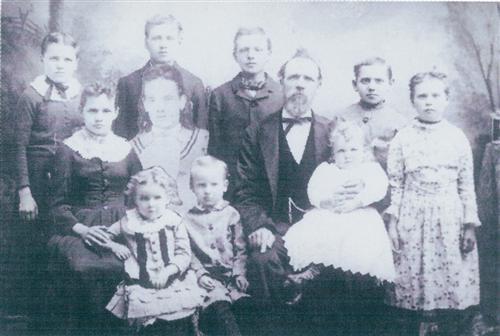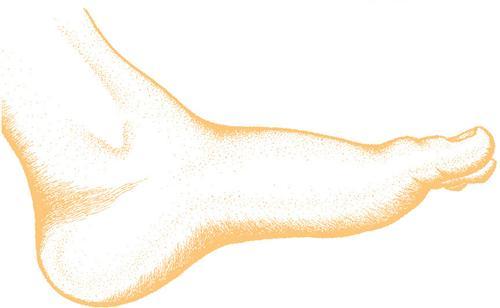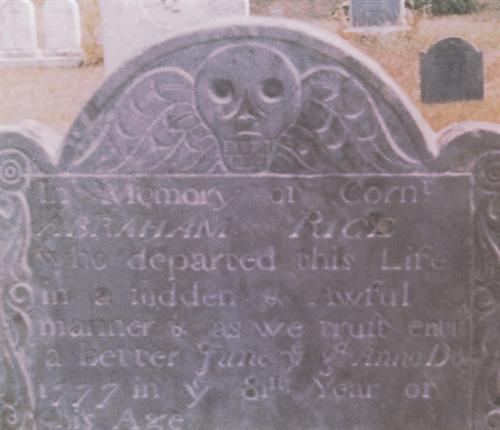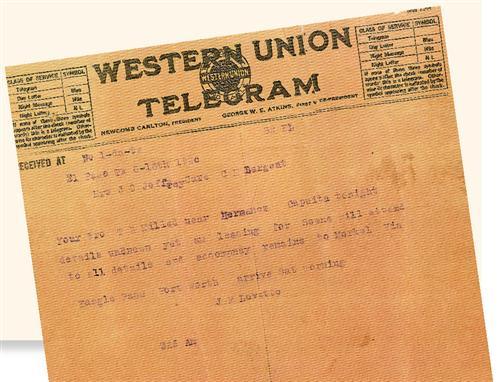Sign up for the Family Tree Newsletter Plus, you’ll receive our 10 Essential Genealogy Research Forms PDF as a special thank you!
Get Your Free Genealogy Forms
"*" indicates required fields
It’s not just birth, marriage and death facts that fascinate Family Tree Magazine readers — it’s also the family stories. You’ve proven it by sending us hundreds of humorous, heartwarming and downright bizarre anecdotes from your clans’ lore. For this special fifth-anniversary issue, we’re spotlighting our favorites: the best of Everything’s Relative. We hope you enjoy these stories as much as we have.
Toe Jam
Just as some health problems are passed down in families, so are stories of old-fashioned treatments that accompanied them. My great-aunt spoke fondly of her grandfather Jeremiah Perrin, even though he died 20 years before she was born. She never tired of telling the following story to her great-niece and-nephews, who enjoyed hearing the grisly tale.
My aunt’s father’s side of the family suffered from diabetes, and the disease cost several unfortunate relatives their limbs or eyesight. Jeremiah was among them. In the 1870s, by the time he’d reached his 30s, his foot had to be amputated. The doctor went to his home to perform the procedure, and the foot was buried in the backyard. No one gave it much thought except the person who felt its absence. A week later, Grandpa Jeremiah was still complaining of pain in his toes, a phenomenon known today as “phantom limb.” He asked his family to dig up the foot and straighten the toes so he could be at peace. Their reluctance to do so only made him more insistent.
As the days went by and Jeremiah’s agitation grew, his wife and children finally agreed, expecting little in return for their trouble. But when they exhumed the foot, they were surprised to find the toes were indeed doubled up as Jeremiah had claimed. Taking care to straighten the toes, they buried the foot a second time and were rewarded with comfortable silence. Grandpa Jeremiah never again complained of foot pain.
— Karen Frisch, Lincoln, RI
New Math
My uncle didn’t like the terms “half” and “step” when referring to his brothers and sisters. So although he was one of 15 children in a blended family, at a family reunion he stated that he had five-and-a-half sisters and three brothers. His explanation was that three sisters plus five half sisters equals five-and-a-half sisters. And six half brothers equals three whole brothers.
— Eileen Yoder, Berlin, Ohio
Not Your Average Show-and-Tell
A few years ago, I taught my class of gifted middle-school students how to research their family trees. For two weeks, they learned to figure Soundex codes, read census records, determine relationships and fill in charts. For the final day of class, I asked students to bring in five items that were significant to their families. I brought my father’s baby shoe, a book of poems my mother had collected, my grandfather’s World War I draft card, the wallet my great-grandfather carried in the Civil War and a page from the family Bible.
I’ve swapped a lot of good teacher stories after 26 years in the field, but this one always brings gasps, laughter and admiration for Andrea’s creativity.
— Becky Walker, Sand Springs, Okla.
Never on Sunday
One of my fifth-great-grandfathers in my paternal line left a surprising story. This ancestor’s name was Abraham Rice, and he lived in Framingham, Mass. One Sunday morning in June 1777, he and a neighbor discussed the sale of a horse. Their bargain was made and, as they shook hands on the purchase price, a sudden thunderstorm struck. A great bolt of lightning flashed down from the sky and killed both men and the horse.
This event was written up in a poem about the punishment they received for the folly of conducting a sale on the Lord’s Day:
My trembling Heart with Grief o’erflows While I record the life of those Who died by Thunder sent from Heaven In Seventeen hundred & seventy seven. Let all prepare for Judgement Day As we may be Called out of Time And in a sudden and awful way While in our youth and in our Prime.
Abraham was born in 1697. His unfortunate neighbor was John Cloyes, born in 1735. The two men share a headstone and were buried together in the Old Cemetery in Framingham. I don’t know where they buried the horse.
— Grace L. Osborn, Zebulon, NC
Wanted: Dead or Alive
My maternal grandmother’s brother had a great sense of humor and loved to tease. During World War I, he was living in another state and decided to go home to Texas. He had a friend send my grandmother a telegram stating that her brother had died, and his body would arrive in Texas by train. The whole family awaited the body’s arrival at the train station. When the train stopped at the station, my great-uncle walked off the train, alive and well! He just wanted to make sure someone would meet him.
— Nelda J. Smith, Abilene, Texas

My great-grandmother Josefiah Haydon Trudgeon died Jan. 6, 1890, a few days after the birth of her 10th baby. A family named Quick adopted little Archie Ray. The other children ranged in age from 1 to 14.
My great-grandfather Joseph Trudgeon felt bad that they hadn’t had a family photo taken while everyone was alive and well. He dressed the children in their finest and took them to a photo studio for a picture. The family posed with a large space next to Joseph.
A picture of Great-grandmother was added to the finished print to make a family photo. My grandfather, Albert, is the boy standing behind my great-grandmother. I think this was quite ingenious and certainly better than no family photo at all.
— Dorothy Dalesky, Albany, Ore.
A Family Forest
Australian genealogist and author Janet Reakes sends an excerpt from an account of the population of the District of Schuitka in Russia, provided to the chancery officials in Moscow one year. The Russian census takers noted with amazement:
“There is in this district a peasant of the name of Feodor Basilly, who has had a very extraordinary number of children by two wives. His first wife brought him 69 children in 27 lyings-in. She had been delivered four times of four children, seven times of three, and 16 times of two. His second wife has lain in only eight times and has had two at a birth six times and three children twice. These two women therefore in 35 lyings-in have made him father of 87 children; and what is still more extraordinary there are but four of these that have died so that his family consists at present of 83 children.”
Reakes adds her own comment: “Who are the real heroes of this story? The women! Do they get any recognition, such as a name? Hannah? Natasha? No! Yet the first wife had to die to give him the record of 69 children and the second wife must have been mad (or madly in love) to marry a peasant with 69 children!”
What’s in a name? $2,000
In 1849, my great-great-grandmother Croom was pregnant with my great-grandfather. At the same time, Great-great-grandfather Croom had cosigned a $2,000 loan for one of his neighbors, Thomas Waters Jr., guaranteeing he’d repay the money if Waters defaulted.
With the birth of the new baby in January 1850, my great-great-grandfather found that not only was he the father of a baby boy, but he also was going to have to pay off Waters’ debt. These simultaneous occurrences must have made a big impression on the parents, since the name they gave the baby was Picture of Hard Times Two Thousand Dollars by Thomas Waters Jr. Croom.
At some later time, the pain of paying the note must have dissipated, since the baby was renamed Rotheus Caswell Croom. Although he did receive a name change, all of his life he was called “Pic,” short for Picture of Hard Times Two Thousand etc.
And things seemed to have continued to improve for the family. Their next child, born in August 1851, was named Luck Now Croom.
Sometimes family stories are just that — stories, not facts. In this case, however, I have the old family Bible, clearly recording the birth and renaming of Great-grandfather “Pic.”
— Henry C. Croom, Scottsdale, Ariz.
— Lorraine Miracle, Bryan, Texas
ADVERTISEMENT




